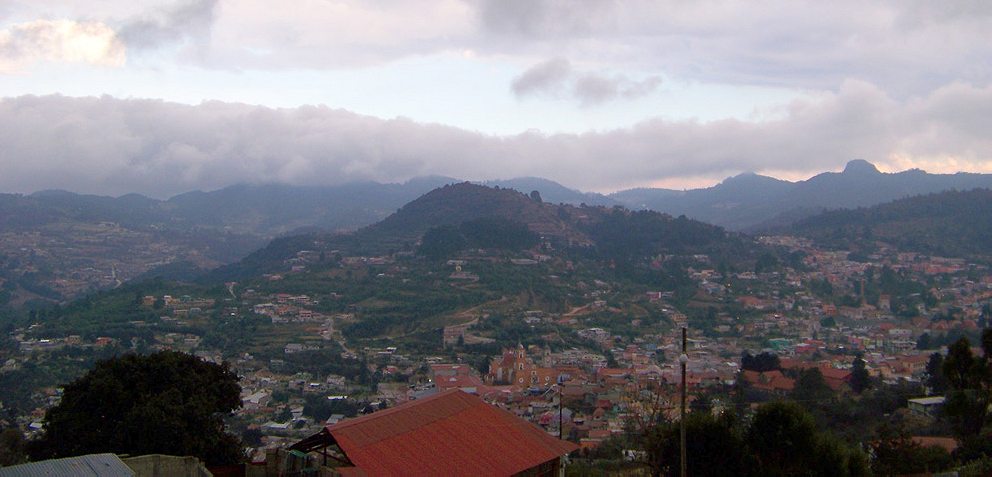Finding the remnants of a long-vanished Celtic mining community in the Cornish Pasties of Hidalgo, Mexico.
Every Mexican is a foodie, by estadounidense standards, at least. Barring French, fusion, or the latest foreign cuisine (Arab restaurants seem to be making popular headway), the best food in the country is available to all income levels, served on the street. Mexicans love to talk about food, recommending this or that tianguis, swearing allegiance to regional dishes that have become national emblems: Oaxacan mole or Yucatecan cochinita pibil.
The is the story of the emblem-dish of the small desert-and-forest state of Hidalgo, which lies about an hour and a half outside Mexico City, at an even higher altitude than the capital (Real del Monte lies 10,000 feet above sea level and is the highest town in the country). Its tidy, palm-studded capital, Pachuca, anchors a scattering of smaller municipios making up the rest of the state. There were gold and silver mines here from almost the day the first Spaniards arrived—Real del Monte’s true name is Mineral del Monte—and they operated, with only brief interruptions at hundred-year intervals for wars of Independence and Revolution, until the last one closed in 2004.
Those mines are what first brought the Cornish to Hidalgo. In 1825 an expedition of sixty men left from Falmouth, Cornwall, in the far southwestern tip of England, for Mexico, with 1500 tons of mining equipment, set on reviving the abandoned mines around of Pachuca. Half of them died of yellow fever along the way, but at the end of a fourteen-month journey, they arrived at Real del Monte. They stayed there for most of a century, until the decade of instability around the Mexican Revolution drove their descendants away.
As they fled, however, they left a fair amount of their culture behind. Notice the tidiness of Pachuca, and the peculiar attention to residential gardening. Yes, there are trees and shrubbery throughout all parts of Mexico, often guarded against dog urine with a barrier of plastic water bottles (the animals shy from their reflection). But in Pachuca there are roses. Little lawns. Parts of the city look not at all unlike areas of West Los Angeles.
Notice the red pitched roofs, another Cornish import, as you make the windy twenty-minute journey uphill from the semi-desert of Pachuca to the high forest of Real del Monte.
When the tin mines of Cornwall began to peter out at the end of the 18th century, men skilled in the difficult practice of hard rock mining fled in droves, looking for work. An estimated quarter-million Cornish immigrated throughout the British Commonwealth, as well as to Mexico and Brazil, in the first half of the nineteenth century. It was these far-flung brothers and fathers of Cornwall who first brought the idea of remittance pay, now a staple of Mexican economy that arrives from Mexican laborers in the U.S. The Cornish sent money home, but they dug into Mexico, intermarried, established their Methodist religion in a country that up to then had been strictly Catholic, and were buried in the Panteón de los Ingléses, feet pointed east—facing home.
The Cornish will tell you they introduced Mexicans—and many other countries—to wrestling, rugby, tennis, chess, and even the only sport that really matters in Mexico now: soccer. Atletico de Pachuca was Mexico’s first fútbol club, founded in 1902. I had to learn that part from the Internet, though, because I don’t really care about sports. What fascinates me most about Hidalgo and its immigrant past is something you find everywhere on the streets of Pachuca and Real del Monte: the Cornish pasty. Two hours from where 24 million Mexicans make and eat more tacos than anywhere else on the planet, you can scarcely find a taco. But there can be up to five pastes spots on a single block. It’s pastes, pastes, pastes (that’s the Mexican spelling) everywhere you look.

First order of business: a Cornish pasty is not just a cold-weather empanada. Yes, it’s a stuffed pastry like empanadas are, but pastes have their own crimping and filling conventions, and their own type of dough. They’re different enough that lots of pastes shops have both pastes and empanadas listed on the menu.
Pasty fillings divide into savory and sweet: fibrous, stewy tinga de pollo and beans-and-chorizo seem to be the most popular meal selections, with hearty potato and onion a close runner-up, while dessert or breakfast sweet pastes come with pineapple, apple, creamy nuez (a sweet nut butter) or arroz con crema. People in Real del Monte and Pachuca, where the highway is lined with mom-and-pop pastes shops as well as corporatized fast-food-style chains like Pastes Kiko’s, seem like they could survive on these baked goods alone.
It’s really not so strange. Foreigners think of Mexico as a hot country, but just as often the mountains are cool, and at the high altitude, summer tropical storms aren’t sultry. They’re as cold as a Cornwall early spring. The day my girlfriend and I arrived, we were madly underdressed and had to impulse-buy flap caps and, in a great humiliation to us capitalinos, tourist-corny jergas (the rough, hooded sweatshirts your cousin might have come back from Tijuana in). At sundown, as we returned to the centro, it started to rain. I had eaten my first Cornish pasty when I was an expat teenager in Buckinghamshire twenty-five years ago, but I still knew exactly what it was for. No matter that the filling is Mexican chicken in red sauce; the feeling of refuge, of a warm pastry to fend off a chilling rain, that is as English as, well… you know the rest.
